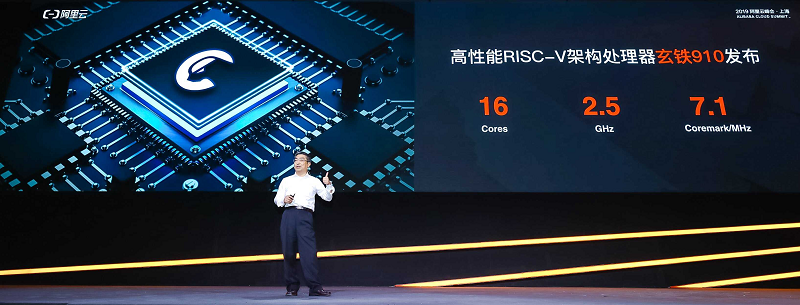By Nitan Dahad, European correspondent for EE Times
Alibaba Group’s chip subsidiary, Pingtouge Semiconductor, recently announced what it claims is the most powerful RISC-V based processor, the Xuantie 910, targeting infrastructure for artificial intelligence (AI), 5G, and the internet of things (IoT) as well as autonomous vehicles.
Revealed at the Alibaba Cloud conference in Shanghai, Pingtouge said that its processor achieves 7.1 Coremark/MHz at a frequency of 2.5 GHz on a 12-nm process node, which is 40% more powerful than any RISC-V processor produced to date.

The Xuantie 910 performance is enabled by two innovations, according to the company. One is the use of a 12-stage out-of-order operation pipeline core, enabling up to eight instructions to be loaded in each cycle, including a load as well as a store instruction. These can form clusters of four, and up to four clusters are possible per chip as it currently stands, which enables a 16-core chip. Secondly, the company said that it has added 50 extended instructions to enhance various arithmetic operations, memory access, and multicore capabilities.
In addition to offering its own chip platform to system-on-chip (SoC) developers or for domain-specific applications, Pingtouge, which was established by Alibaba Group in September 2018 following the acquisition of C-Sky Microsystems , also plans to release its code as open-source on GitHub, likely in September 2019.
Xiao Ning, Vice President of Alibaba Group, said: “The traditional universal chip model is more and more difficult to adapt to the needs of fragmented AIoT [artificial intelligence internet of things] scenarios.” That’s why he added that open source is a trend that would help address this challenge and that Pingtouge is committed to enabling chip infrastructure providers in the AIoT era.
Chinese media has reported this as a major step in enabling local companies to get easy access to locally developed processor architectures, especially in light of the restrictions put on Huawei accessing U.S. technology and the uncertainty that created.
This article was originally published on EE Times.
Advertisement
Learn more about Electronic Products Magazine





